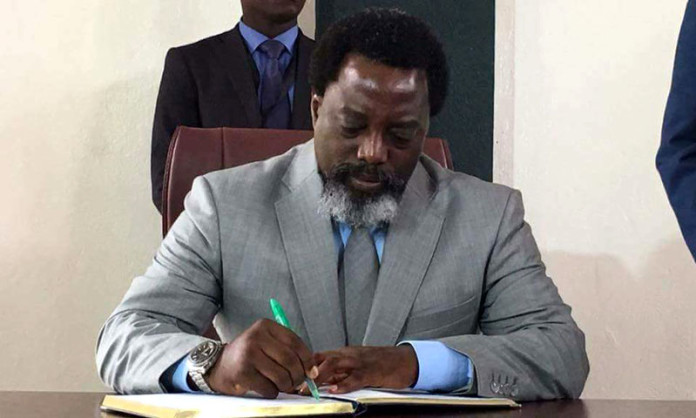
S&P Global Market Intelligence stated in a report in March that global spending on the search for non-ferrous metals rose to an estimated $8.4bn in 2017, compared with $7.3bn in 2016. This represented the first annual increase in exploration spending after four consecutive years of declining investment.
Alarmingly, however, southern Africa has been the recipient of very little of this increasing exploration investment. Yes, projects in the region offering exceptional grade or which have good potential to produce lithium, cobalt, tin and vanadium – the metals of the moment – are seemingly able to attract the required investment, but these are few and far between.
In fact, the Fraser Institute’s Annual Survey of Mining Companies 2017 showed an across-the-board decline in the investment attractiveness of African countries year-on-year, stating that “in terms of overall investment attractiveness, as a region, Africa ranks as the second least attractive jurisdiction for investment”.
The problem lies in the steady trend towards resource nationalism in southern Africa mining jurisdictions.
“We used to advise greenfields clients in the region, but we don’t anymore because there aren’t any left,” said a resource banker who asked to remain anonymous.
“The problem in Africa is that, as a whole, there is a rise of nationalism and an absolute desire to control resources. Exploration spend is up in South America, Russia, Australia and North America, but how many exploration projects can you name in southern Africa?”
Regulatory uncertainty that accompanies political change is also an investment detractor, with miners now forced to make their returns within one regime change to the next – usually between three to five years.
“If I had $100m, I’d rather stick it into Apple or Google than rather deal with difficult governments and communities, and changing regulatory and political regimes,” he says.
Meanwhile, as more shares are issued to fund project development, original capital funders see their shares increasingly diluted. This is recoverable once the project hits production phase and the share prices increases, but of this there is no guarantee.
There does, however, seem to be hope in the rise of “new-age” battery metals, and projects such as Bushveld Vanadium in South Africa, the Arcadia lithium project in Zimbabwe, and Alphamin’s Bisie tin mine in the Democratic Republic of Congo (DRC), all of which have managed to raise capital in recent months.
The jury appears to be still out for Zimbabwe, with doubts over whether the new political dispensation is investor-friendly.
“It’s unsure whether there’s new will or whether the crocodile just changed its skin. There is lots of money waiting on the sidelines to go in, as Zimbabwe certainly has lots of projects that are exciting, but delivery will depend on the continuity of a regulatory and fiscal regime,” the banker said.
Meanwhile, the DRC-focused tin explorer Alphamin’s ability to consistently raise capital has long been attributed to the project’s “silly” tin grade of 3.4% for 155,300 tonnes using a 0.5% cut-off. This has not, however, exempted the junior miner from the regulatory volatility endemic to the region.
It, along with other miners active in North Kivu, are currently in the process of assessing a revised Mining Code that ups its royalty rate from 2% to 3.5%, or higher, and subjects it to higher taxes. It also does away with a ten-year stability clause that would set regulatory parameters and allow time to adjust to new legislative requirements.
Alphamin CEO, Boris Kamstra, says that the revised code has introduced onerous administrative requirements, some of which remain unclear.
“Under the [previous] 2002 code, the mining industry operated within certain parameters. One could look at the 2002 code and be very clear as to what you needed to comply with, what was not required. With the news code, that has been stripped away and companies are now operating under common law and we’re not yet 100% sure of exactly what that entails,” he says.
Kamstra adds that the ten-year stability clause was a major selling point to early-stage investors, and that the dissolution of this protection has forced him to do some explaining.
“When I was meeting with new investors, one of their biggest concerns was, what if the DRC changes the rules? And I was able to say hand on heart that investors could model their downside investment case on a ten-year view. So rightfully, we and the DRC have a bit of a credibility problem,” he says, adding that he remains positive that a resolution will be found.
Kamstra, meanwhile, points to a likely future reduction in the number of greenfields projects in southern Africa as a result of the move towards resource nationalism.
“Things are bleak for people to invest, and unless they can find projects that are similar to Alphamin and ideally in softer locations, it is going to be hard.
“I do believe that this is cyclical, but one has to survive in the interim. At some point, governments will say, ‘Oops, this is not looking good for us, we need to bring people in’”.
When I was meeting with new investors, one of their biggest concerns was, what if the DRC changes the rules? And I was able to say hand on heart that investors could model their downside investment case on a ten-year view. So rightfully, we and the DRC have a bit of a credibility problem.
Says Marcin Wertz, a partner and principal mining engineer at SRK Consulting SA: “Governments around the world frequently face political pressure when it comes to ensuring their return from mining; even Australia mooted a super tax during the last minerals boom.
“The important issue for mining investors is that changes to regulatory regimes do not bring undue uncertainty to the planning and compliance process; in a long-term and high-risk environment like mining, any compounding of risk with a lack of certainty on which to plan, is likely to undermine investor confidence and send capital in other directions”.











